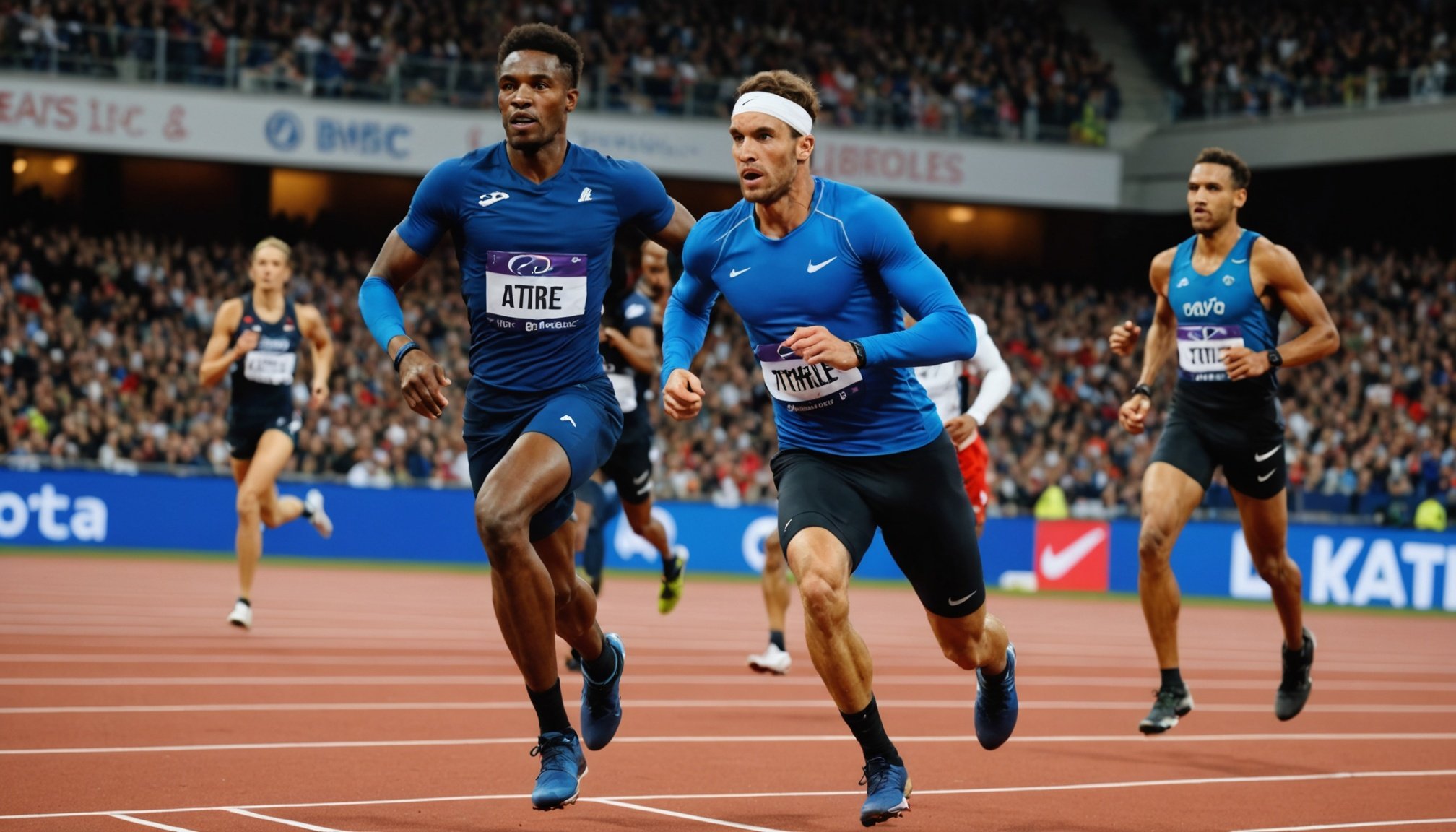Overview of Smart Fabrics and Wearable Technology
Smart fabrics and wearable technology have revolutionised the way we think about clothing and accessories, blending innovation with everyday use. Smart fabrics, embedded with digital components such as sensors and actuators, enhance textile functionality beyond traditional purposes. They can track, respond, and adapt to environmental changes or user needs, showcasing their dynamic nature.
In the realm of sports, wearable technology has significantly influenced athlete training and performance. Devices like fitness trackers and smart clothing items are equipped with sensors for performance tracking, offering real-time data on metrics such as heart rate, movement, and caloric burn. These wearable tech gadgets provide athletes with critical insights into their physical state, helping tailor training regimes for maximal efficiency and reduced injury risk.
Additional reading : Revolutionizing Property Tours: The Impact of Augmented Reality on Real Estate Experiences in the UK
Performance tracking plays a crucial role for athletes seeking improved efficiency and results. By analysing real-time data, athletes can understand their strengths and identify areas that require enhancement. Moreover, coaches can use this data to craft personalised training plans, optimising athletic performance. In a competitive sports world, the nuance and precision gained through smart technology in performance tracking present an edge, fostering not just competence but excellence. This fusion of technology and sports empowers athletes to reach new pinnacles in their careers.
Benefits of Integrating Smart Fabrics and Wearable Technology
Smart fabrics and wearable technology offer numerous benefits in various fields, especially in athletics and health monitoring. One of the primary advantages is the enhanced data collection capabilities these technologies provide. By embedding sensors into fabrics, athletes can continuously monitor physiological metrics such as heart rate, body temperature, and hydration levels. This health monitoring is crucial for optimizing performance and preventing injuries.
Moreover, smart fabrics contribute to improving athlete comfort and safety. Traditional sportswear can often feel restrictive or become saturated with sweat, leading to discomfort. With innovations in breathable and responsive materials, athletes experience improved comfort during intense activities. Smart fabrics can adjust to environmental conditions, ensuring the body remains at an optimal temperature, enhancing overall well-being.
Furthermore, integrating smart technology leads to increased motivation through performance analytics. Wearable devices can track progress in real-time and provide feedback, encouraging athletes to push their boundaries. By analyzing performance data, athletes gain insights into areas needing improvement, promoting a more effective and motivated approach to training. In essence, these advancements not only elevate athletic performance but also ensure health is monitored and prioritized, offering a well-rounded solution for modern athletes.
Integration Methods for Smart Fabrics and Wearable Technology
In the ever-evolving world of smart fabrics and wearable technology, integration techniques play a vital role. Seamlessly syncing these innovations with existing tech ecosystems ensures they offer practical benefits.
Methods of Integration
Various methods of integration cater to different needs and applications. Data synchronization is achieved through wireless technologies like Bluetooth and Wi-Fi. These methods simplify the interaction between the wearable devices and other electronic systems users may rely on.
Data Communication Protocols
The lifeline of wearable technology lies in efficient data communication protocols. Protocols such as Zigbee, BLE (Bluetooth Low Energy), and NFC (Near Field Communication) allow devices to exchange information quickly and securely. These protocols are pivotal in maintaining a balance between energy efficiency and data transfer rates, making wearable technology more user-friendly.
Compatibility with Existing Systems
Compatibility with existing systems is paramount for operational efficiency. Ensuring that smart fabrics and wearables work seamlessly with devices like smartphones and tablets enhances user experiences. Fostering interoperability through universal standards and APIs (Application Programming Interfaces) bridges gaps between varied technologies, facilitating the development of a cohesive tech ecosystem.
Real-World Applications and Case Studies
Smart fabrics have significantly impacted professional sports, revolutionising how teams monitor and enhance performance. Several professional teams have embraced these technology applications to gain a competitive edge. For instance, top football clubs incorporate smart fabrics into their training gear, enabling real-time performance tracking.
Examples in Professional Sports
Smart fabrics are employed by sports teams to monitor athletes’ vitals and activity levels. In professional sports, data on heart rate, muscle strain, and hydration levels is crucial. This data allows teams to customize training programs and recovery protocols. Notably, premier basketball teams use smart vests to track players’ movements across the court, optimising strategies and preventing injuries.
Successful Case Studies
Case studies reveal that the adoption of smart fabrics leads to tangible improvements. One pertinent example is a case where a football team reduced injuries by 25% after integrating these technology applications. Performance tracking facilitated personalised training regimens, highlighting weak points and fine-tuning athletes’ responses.
Outcome Analysis
Consequently, teams investing in smart fabrics witness enhanced athletic performance, streamlined training processes, and reduced injury rates. Technology applications in these contexts do not only offer innovative solutions but also contribute to the strategic development of teams and their long-term success.
Challenges in Integrating Smart Fabrics and Wearable Technology
Integrating smart fabrics and wearable technology presents significant challenges. One primary concern is data privacy. Athletes, in particular, must consent to the collection and use of their personal data. Ensuring that individuals understand how their data will be used, who will access it, and how it will be protected is paramount. This involves clear communication and robust security measures to prevent data breaches.
On the technical front, the implementation of wearables involves multiple technical issues. These can include the development of sensors that are both accurate and comfortable, ensuring durability under different environmental conditions, and maintaining reliable connectivity while on the move. Each of these factors requires extensive research and innovation to overcome.
Balancing the use of technology with traditional methods is also a crucial challenge. While smart fabrics offer advanced insights and data collection, traditional techniques often provide a foundational understanding that technology cannot replace. Thus, the integration process necessitates a harmonious blend of these approaches, ensuring that technological advances enhance, rather than replace, traditional methods.
Addressing these challenges effectively will enable the seamless adoption of smart fabrics and wearable technology across various sectors, enhancing their benefits while ensuring users’ rights and comfort are safeguarded.
Future Trends in Smart Fabrics and Wearable Technology
The realm of smart fabrics is witnessing burgeoning technological advancements, hinting at a promising future rife with innovation. Emerging technologies in this sector are pioneering efforts to engineer fabrics that not only enhance comfort but also provide real-time data analytics. For instance, incorporating nanosensors into fabrics enables monitoring of physiological parameters, crucial for athlete performance optimization.
In the domain of wearable technology, future trends suggest a surge in innovations targeting sports and athletic training. Predictive models powered by AI are set to revolutionize how athletes approach training methodologies. These tools can offer personalized feedback, adjusting training regimens to improve efficiency while minimizing injury risk.
One key impact on athletic training lies in the seamless integration of smart fabrics with everyday sportswear. Such fabrics will transform standard gear into intelligent equipment capable of delivering insights on muscle fatigue, hydration levels, and overall body mechanics. This technology empowers athletes to innovate their techniques and achieve peak performance.
Looking ahead, the fusion of smart fabrics and wearable technology promises significant transformation across sports. Enhanced data collection and analysis capabilities in real-time pave the way for innovative training dynamics and personalized solutions tailored to individual athletes’ needs.







